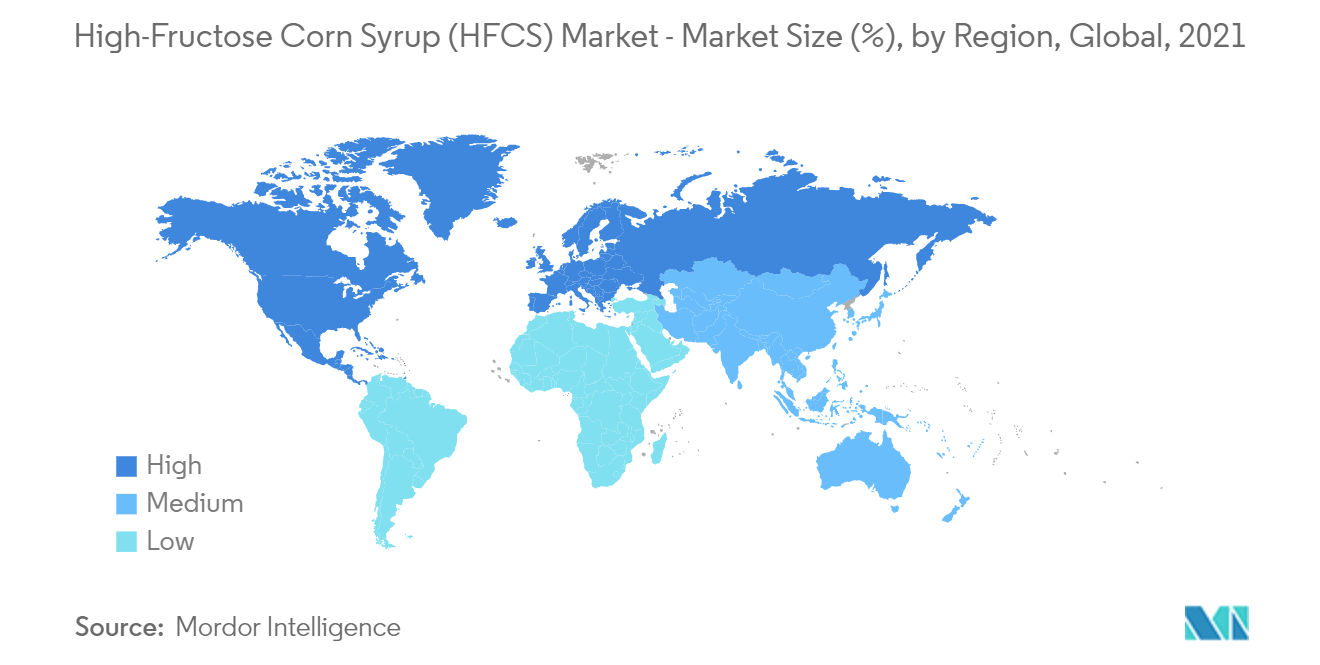Market Trends of High-fructose Corn Syrup (HFCS) Industry
This section covers the major market trends shaping the High Fructose Corn Syrup Market according to our research experts:
Strategic Investments by Key Players
- Across the global market, according to the European Starch Industry Association, in 2020. Europe is one the largest region, producing a significantly high number of products, including sweeteners from corn starches. Thus, with the rising demand for corn starch sweeteners, many corn starch manufacturers are investing in the corn starch and sweeteners market to support the economy and community of their country of origin while positioning the business for long-term growth.
- For instance, in august 2022, Cargill spent around USD 50 million to build a corn syrup refinery in Fort Dodge, Iowa, which expanded the company's ability to meet the growing demand for the ingredient in a more sustainable way. Therefore, such high investments have led to a significant increase in the production of HFCS across the world.
- According to the US Department of Agriculture and Economic Research Service, the production volume of high fructose corn syrup in the United States was 7,631 (in 1000 short tons). This rise in HFCS production has resulted from intensive investments in the HFCS market by corn starch players and prominent manufacturers worldwide. For instance, Ingredion Inc. invested USD 30 million in the production capacity at its San Juan del Rio manufacturing facility in Mexico. The manufacturing process of HFCS is easier to handle and more cost-effective than table sugar. The US Food and Drug Administration has determined HFCS as a safe ingredient for food and beverage manufacturing

North America Holds the Major Share
- North America is one of the largest consumers of HFCS in the world. The rising demand for HFCS in the United States majorly drives the region's market share. The demand for high-fructose corn syrup (HFCS) sweeteners across the country is majorly due to their wide usage in the confectionery, bakery, and beverage industries, especially soft drink manufacturing.
- The most used varieties of HFCS across the country are the HFCS 42 (used in beverages, processed foods, cereals, and baked goods), HFCS 55 & HFCS 65 (used in soft drinks), and HFCS 70 (used in filling jellies). HFCS 90 has some niche uses, but it is mainly mixed with HFCS 42 to make HFCS.
- The push factor from value-added and fortified food categories is projected to drive the demand in the years to come. In addition, the exports of HFCS from American producers have grown steadily during the early 21st century. According to FDA, the most common forms of HFCS contain either 42 or 55 percent fructose, as described in the Code of Federal Regulations.
- Thus, the increase in international trading of HFCS has further propelled the growth of the HFCS market within the country. High fructose corn syrup is actually cheaper than granulated sugar in America. The government pays subsidies to farmers for corn. Many products made with this ingredient will be more affordable than foods made with whole, natural ingredients.


